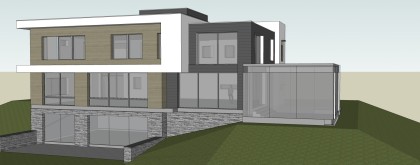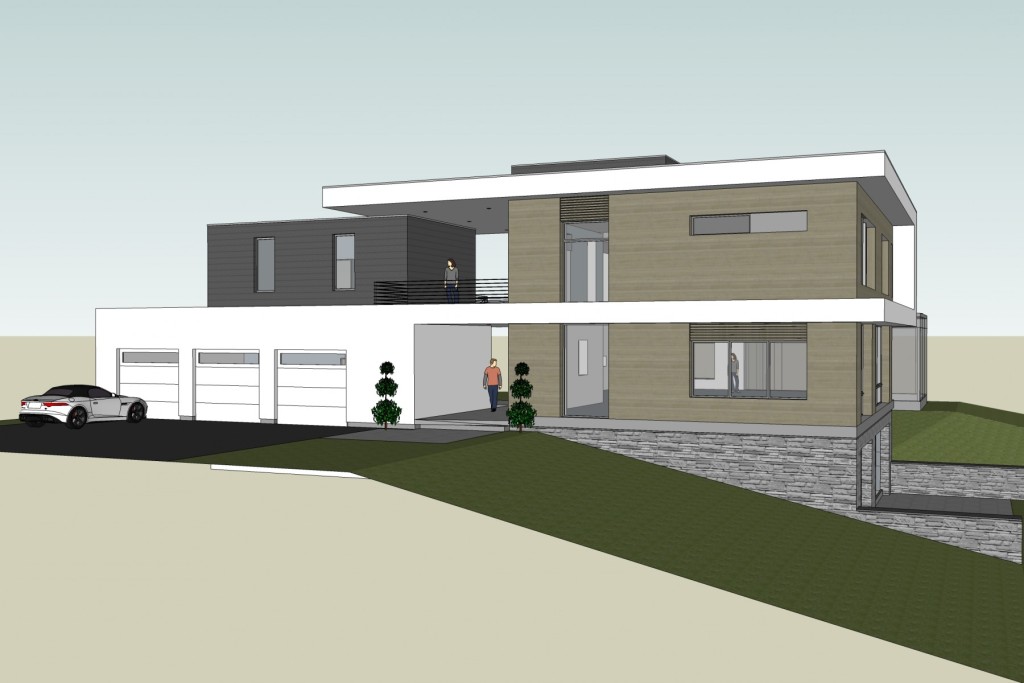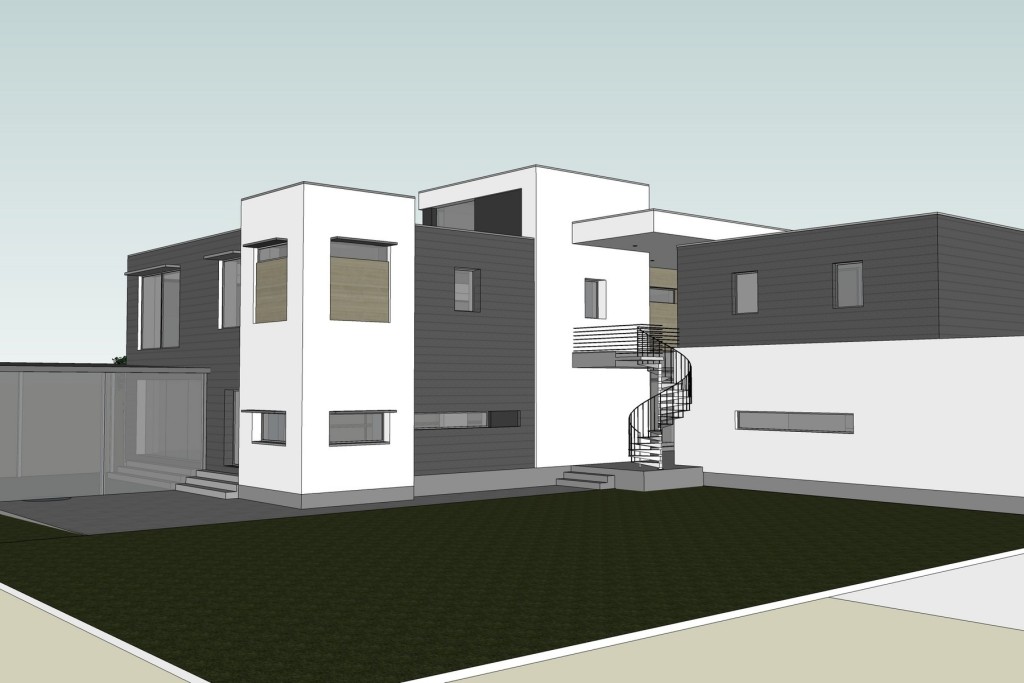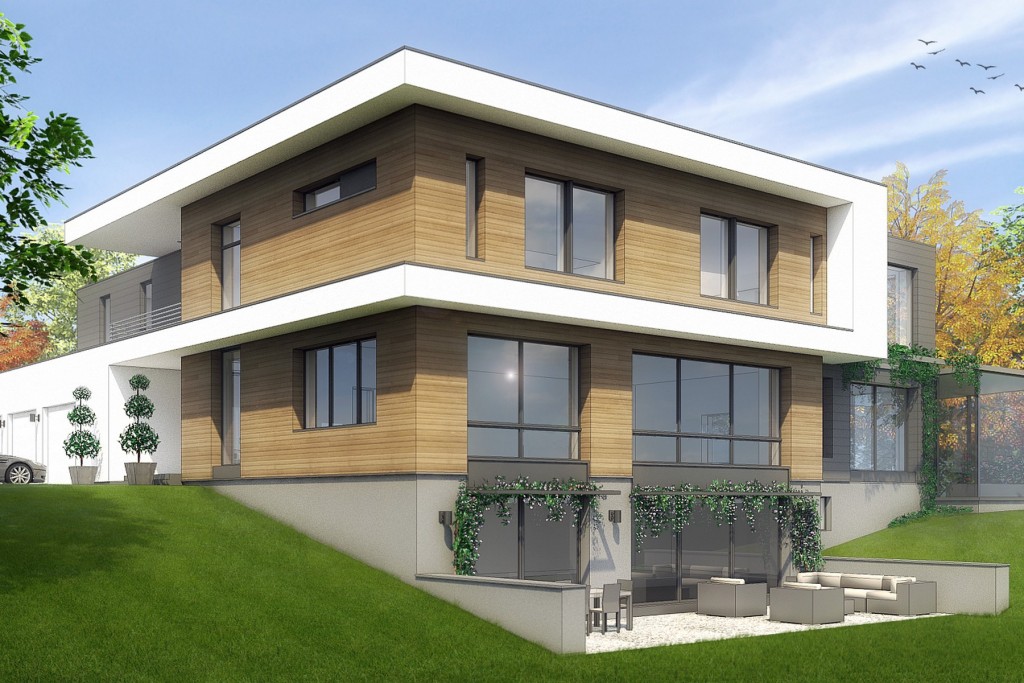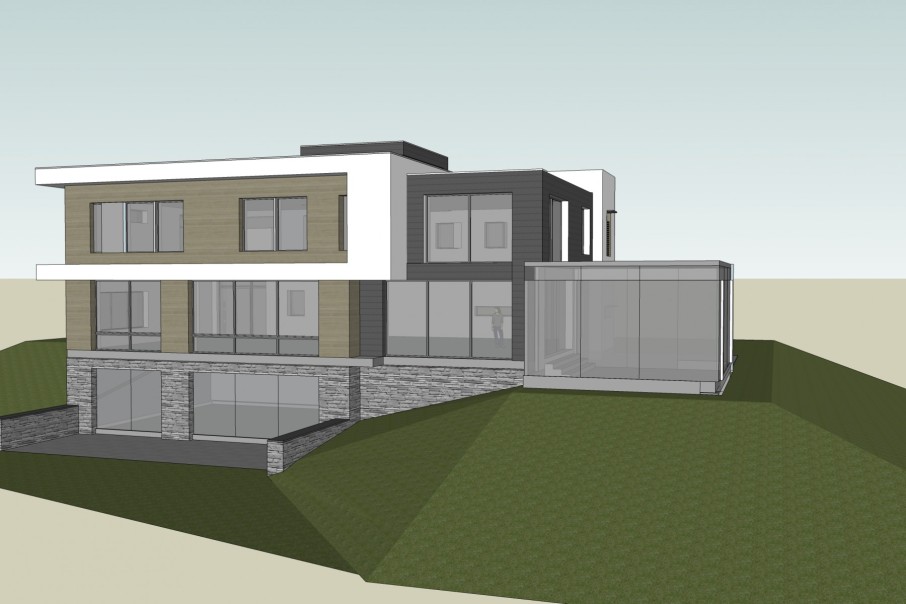The world’s most energy-efficient construction practice has just entered Stamford with two new construction properties that represent the city’s first ever Passive House properties. This eco-friendly, innovative building initiative, which was recently endorsed by the White House for homes in New York State, aims to bring renewable energy to households across the country, supporting an overall “greener” way of life. The two properties, both located on Campbell Drive and surrounded by beautiful woodlands, are built by Salvatore Zarrella of Construction Management Group, LLC, based out of New Canaan, CT, and designed by Westport architect Lucien Vita of Vita Design Group. Stamford agent Walter Block has the listings, one a traditional farmhouse offered at $1,779,000, and the other an innovative modern home offered at $1,695,000.
“The homes are at once practical and beautiful, with a superior quality of building,” said Block. “The amount of interest we have generated so far in these properties, just from the initial design renderings alone, has been tremendous.”
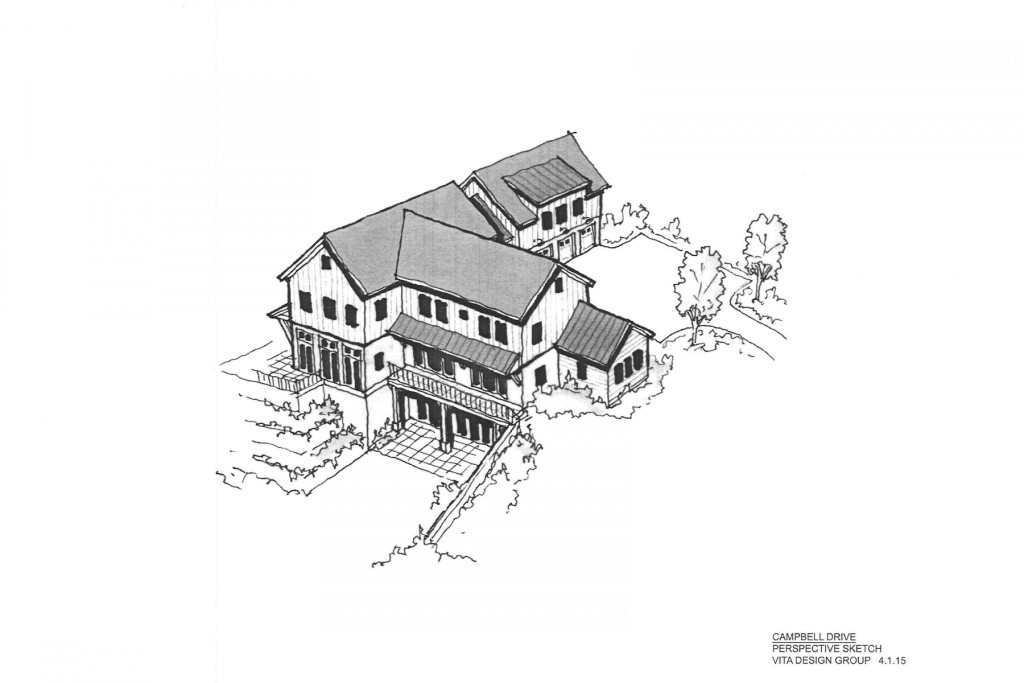 The Passive House, or “Passivhaus,” originated in Germany, becoming prominent in the 1990s when Physicist Wolfgang Feist developed the standards for these environmentally conscious residences. The buildings focus on three critical elements: heating and cooling energy criteria, electrical usage and the air tightness of the building envelope, or the home’s outer shell. And then it’s simple—if the structure meets these criteria, a Passive House can be built with any architectural style, using any building materials desired. The first Passive buildings began to appear in the U.S. in the 1970s, and have just recently sparked greater interest among a few developers and homeowners. According to Zarrella, however, the number of Passive Homes certified under the Passivehaus Institute Standard (PHI) in the U.S. is still under a hundred.
The Passive House, or “Passivhaus,” originated in Germany, becoming prominent in the 1990s when Physicist Wolfgang Feist developed the standards for these environmentally conscious residences. The buildings focus on three critical elements: heating and cooling energy criteria, electrical usage and the air tightness of the building envelope, or the home’s outer shell. And then it’s simple—if the structure meets these criteria, a Passive House can be built with any architectural style, using any building materials desired. The first Passive buildings began to appear in the U.S. in the 1970s, and have just recently sparked greater interest among a few developers and homeowners. According to Zarrella, however, the number of Passive Homes certified under the Passivehaus Institute Standard (PHI) in the U.S. is still under a hundred.
“Passive Houses are 85%-90% more efficient than the average home, with a building envelope so air tight they effectively run on the amount of energy required from a blow dryer. Imagine essentially arriving at net zero for energy use—that is, a home that produces the same amount of or more energy than it consumes. How many problems could we solve then? If net zero is the Holy Grail in construction standards, going Passive first is the best way to get there,” said Zarrella.
Orienting interiors to take full advantage of sunlight, using thick, highly insulated walls and installing European type airtight windows and heat recover ventilation systems that exchange indoor and outdoor air efficiently and provide superior air quality: these are some of the key techniques used in the construction of Passive buildings. The heating and cooling systems installed are typically much smaller in size compared to those used in conventional construction. Lower energy bills, a quieter living environment and cleaner air that even has the ability to reduce asthmatic and allergy systems are all direct results experienced by the homeowners who are part of the recent rise in Passive Homes in New York City, according to a recent New York Times story. As interest in these pioneering “green” structures continues to rise, so do plans for further construction. Ground was just broken on a high rise in Manhattan for Cornell Tech campus, claiming the spot as the tallest Passive House in the world, surpassing the current tallest high rise Passive structure in Vienna, Austria.
For more information on the properties at C1a and C1b Campbell Drive in Stamford, Conn., please click here and here.
